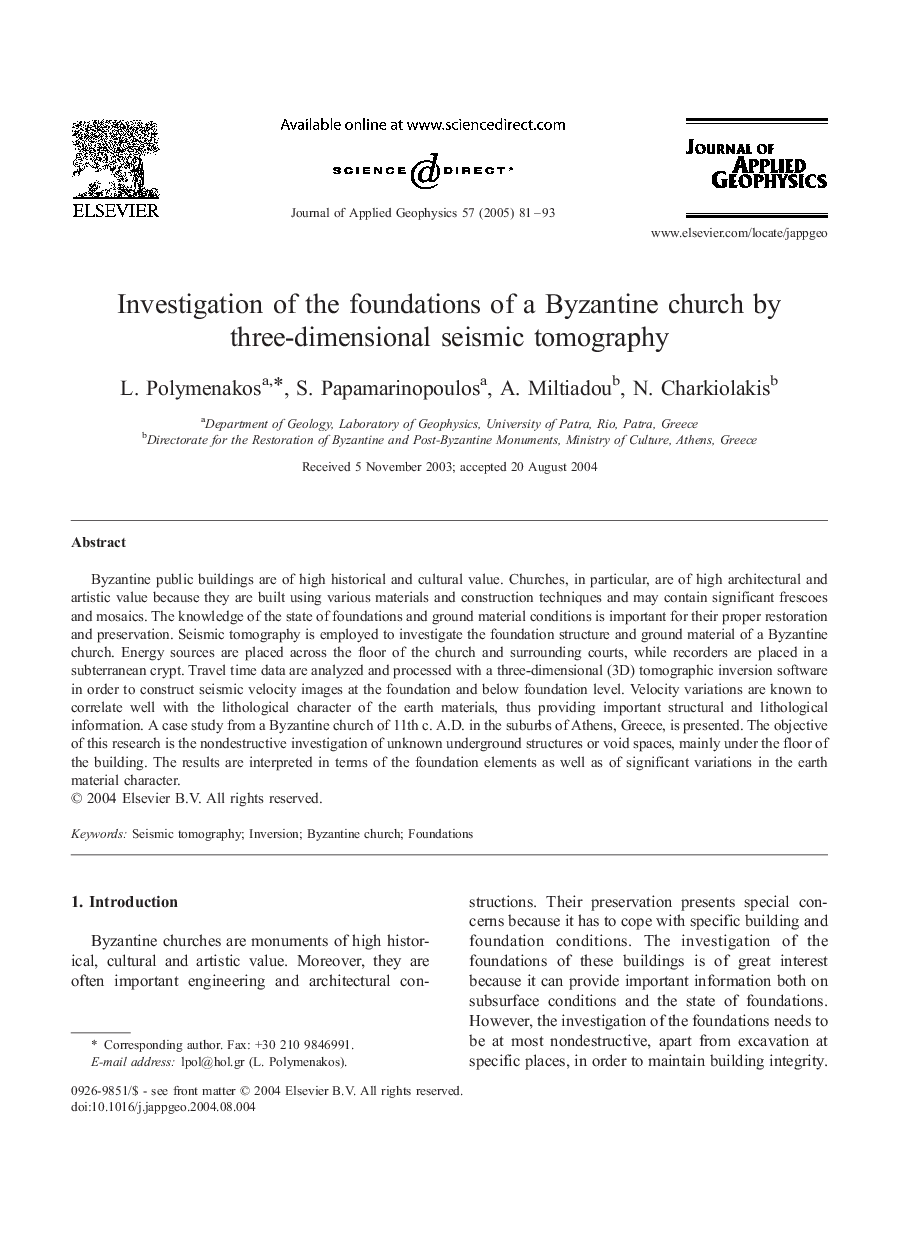| Article ID | Journal | Published Year | Pages | File Type |
|---|---|---|---|---|
| 9537469 | Journal of Applied Geophysics | 2005 | 13 Pages |
Abstract
Byzantine public buildings are of high historical and cultural value. Churches, in particular, are of high architectural and artistic value because they are built using various materials and construction techniques and may contain significant frescoes and mosaics. The knowledge of the state of foundations and ground material conditions is important for their proper restoration and preservation. Seismic tomography is employed to investigate the foundation structure and ground material of a Byzantine church. Energy sources are placed across the floor of the church and surrounding courts, while recorders are placed in a subterranean crypt. Travel time data are analyzed and processed with a three-dimensional (3D) tomographic inversion software in order to construct seismic velocity images at the foundation and below foundation level. Velocity variations are known to correlate well with the lithological character of the earth materials, thus providing important structural and lithological information. A case study from a Byzantine church of 11th c. A.D. in the suburbs of Athens, Greece, is presented. The objective of this research is the nondestructive investigation of unknown underground structures or void spaces, mainly under the floor of the building. The results are interpreted in terms of the foundation elements as well as of significant variations in the earth material character.
Related Topics
Physical Sciences and Engineering
Earth and Planetary Sciences
Geophysics
Authors
L. Polymenakos, S. Papamarinopoulos, A. Miltiadou, N. Charkiolakis,
